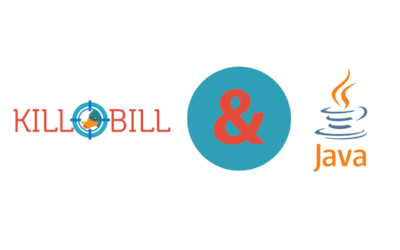Earlier this month, we were thrilled to see that a software consulting company headquartered in Germany, doubleSlash, wrote a blog post about using Kill Bill for subscription billing:
https://blog.doubleslash.de/introduction-to-kill-bill-using-a-fictitious-vignette-service/
The blog post describes the following subscription billing use case:
On behalf of two European municipalities, an organization electronically collects road charges from drivers. Drivers pay a flat monthly fee every month and must also purchase “vignettes” based on the amount of time they plan to use the road (one day, two months, or one year).
This billing scenario wasn’t implemented (for legal reasons unrelated to Kill Bill). However, it describes a typical subscription billing use case for Kill Bill—one in which you must purchase a base subscription to use the service/product, plus “add-ons” that define the usage duration (one day, two months, etc.).
Overall, the author gave Kill Bill a thumbs up, summarizing the experience in this way:
We appreciate the time doubleSlash spent in evaluating Kill Bill and writing up the blog post. We’re going to elaborate on some points in the article that have to do with:
- Support and demo
- In advance billing
- Entitlement behavior
- Catalog
Subscription Billing Support
In their blog post, doubleSlash wrote:
“Compared to a commercial solution it’s more difficult to understand the system since there is no direct contact with the supplier.”
Right – we’re an open-source software organization and not a SaaS software business with hundreds (or thousands) of minions. However, over the past eleven years or so with Kill Bill, we’ve amassed a good amount of documentation.
We’re working hard to keep that documentation up-to-date, too! We have three technical writers who are preparing for a large-scale documentation reorg and rewrite. So, if you have a question about installing Kill Bill or how it works, the docs are the best place to start.
Another support resource is the Kill Bill Community (a.k.a. the mailing list). You have tons of previous posts to search on and, of course, the option to ask a question.
You also can communicate with us directly via premium support. (This helps us continue Kill Bill’s development.)
Subscription Billing Demo
Additionally, the doubleSlash blog post mentions:
“A commercial product would normally come with a guided product demo and probably include the assistance of a solution architect or any other expert, who could help you with any questions you might have.”
Again, the hundreds/thousands (or hundreds of thousands) of minions are absent, but the Kill Bill team has developed several overview videos and released them on YouTube. The Kill Bill Overview videos will give you a good idea if Kill Bill is right for your organization. We are actively working on more videos. (You can subscribe to the Kill Bill YouTube channel here.)
Some of these overview videos walk you through Kill Bill features and functionality through Kaui (the Kill Bill admin user interface). By watching those videos and using our cloud-based, self-guided demo version of Kill Bill, you will have a better understanding of Kill Bill’s capabilities.
The Kill Bill team can also provide ongoing assistance for a Kill Bill implementation, either via GitHub sponsorship or support contracts.
Subscription Billing “In Advance”
Further into the doubleSlash blog post, you’ll read that [Kill Bill] “uses the billing mode IN_ARREAR, which is currently the only supported mode.”
Actually, for subscription billing, Kill Bill supports both IN_ADVANCE and IN_ARREAR. Billing We haven’t yet implemented IN_ADVANCE with the usage-based model because, in our experience, it’s not strictly needed. (Probably a blog post for another time!)
Subscription Billing Entitlement Behavior
The doubleSlash blog post mentions a situation in which an end user should not be able to purchase an item again within a two-month period:
“During this time, it shouldn’t be possible to buy it again. Unfortunately, we haven’t found a way to realize this behavior. This probably must be checked by the system which calls Kill Bill.”
Kill Bill already includes an entitlement sub-module as part of subscription management. If additional custom logic is required (as described in the case above), you can develop an entitlement plugin that would block the creation of the subscription.
For organizations that don’t have an in-house IT team to work on plugins and other customizations, we have a partnership with a software development firm that can help you. You can get more information here.
Subscription Billing and Catalog
About the Kill Bill catalog, the author writes:
“The catalog XML is rather easy to understand, but it also brings the typical XML drawbacks with it. It feels like the more products and plans you have, the more difficult it gets to maintain them. But this is only a guess and not an observation we made.”
Kill Bill customers with a large number of products in the catalog typically don’t edit the catalog in its XML format. Instead, to manage the XML, they usually create an in-house UI (or other process) that’s tailored to their business. We have customers with hundreds of thousands of plans in their catalogs, and this seems to be working well for them.
However, if a business doesn’t want to use the Kill Bill catalog (perhaps because they want to use their existing catalog system), they can “turn off’ the Kill Bill catalog. Using a catalog plugin, they can delegate that functionality to an in-house or third-party catalog system (for example, Salesforce or Shopify).
Kill Bill Can Fulfill So Many Use Cases
As mentioned earlier, the billing use case for road charges wasn’t actually implemented. But it was still enjoyable to see yet another way in which Kill Bill could help a company fulfill its unique subscription billing needs.
We’d love to see more of these stories. If you’re using Kill Bill and have a use case you want to share, we’d love to publish it!


